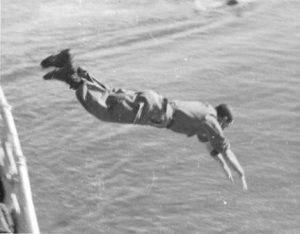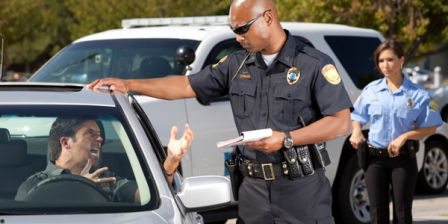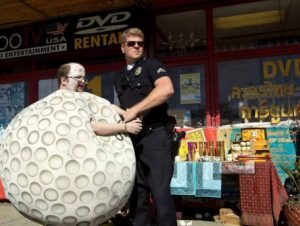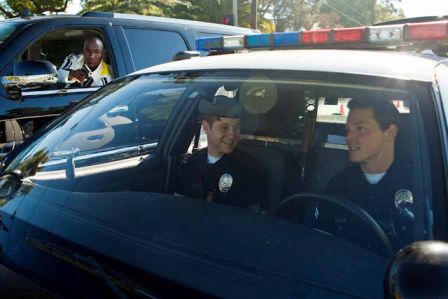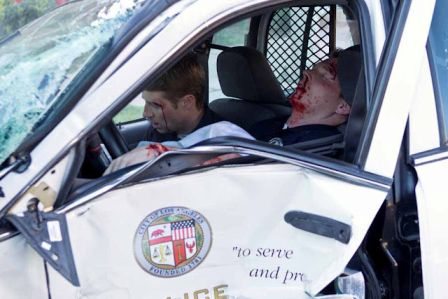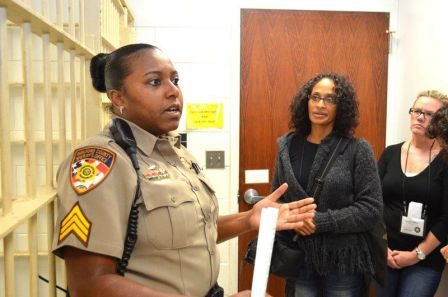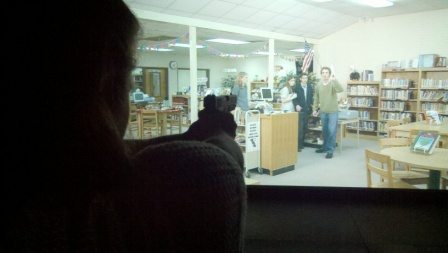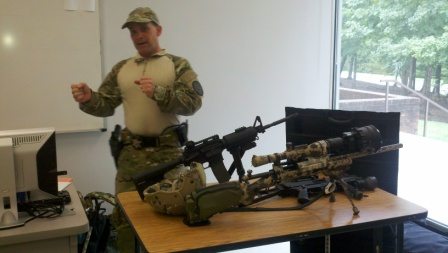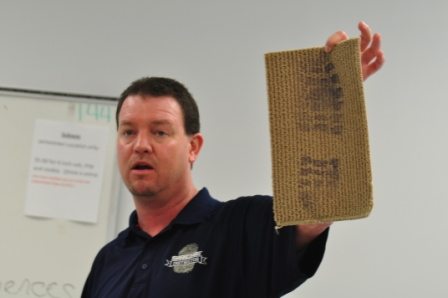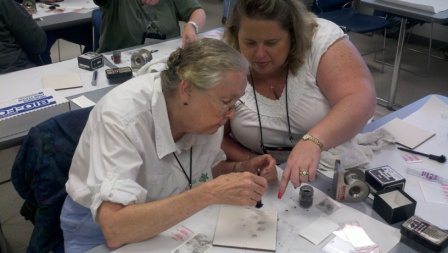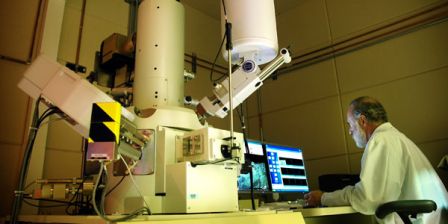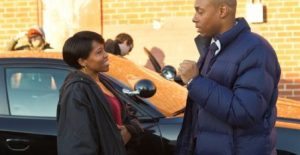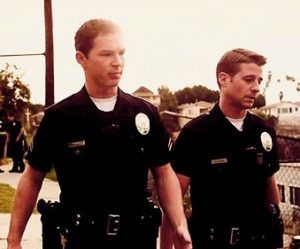Well, it was better than the last episode.
Yep, that’s how I’ve started rating Castle episodes. It’s an easy system, really. Only four grades (4 being the worst).
MY CASTLE RATING SYSTEM
4. Lanie’s off the charts. Toss the remote at the TV
3. Filler episode (which, by the way, is almost every episode these days). Ho Hum.
2. Well, it was better than the last episode. Minimal cursing at the TV
1. The Castle we used to love. At least there’s some, however minimal, reference to Castle as a mystery writer. Remember, that’s what this show was about once upon a time.
So, for me, this episode was a 2. It wasn’t all that hot, but it was better than the last episode. But it could be worse. We could all be Brian Dunkleman, right? American Idol will never go anywhere, so I’m quitting. What…a…dummy.
Anyway, the episode wasn’t bad, but it wasn’t all that good either. At least we had Lanie and her nonsense to keep us entertained. More on that in a minute. First, let’s see what Melanie has to say. I can see her all goo-goo-eyed over this one.
The show is finally back after its early March hiatus with A Dance with Death, a classic-Castle episode that begins with a murder on the set of a dancing show titled A Night of Dance. I enjoyed this one. The case was twisty without being too convoluted, at least to me, and the friendly banter kept me watching. We got a little theory building, a lot of smiles, and some goo-goo eyes between our dynamic duo, but no real movement on the relationship front. Although I can’t help but notice how Rick and Kate’s relationship has evolved. They stand closer to each other than ever before, they touch a lot, and those glances are way more potent than ever before.
One of my favorite parts of this one, however, didn’t involve them at all. I’m talking about the ring incident between Ryan and Esposito. Ryan got Esposito to wear his wedding ring while they went to question a stripper to see which detective the woman might flirt with — Esposito, with the ring on, or Ryan… with no ring. And much to Ryan’s chagrin, the stripper still flirted with Esposito more. The worst part, though? Ryan’s ring got stuck on Esposito’s hand. Oops! Took them the rest of the show to get it off, when Kate saved the day with some silky lotion. Hilarious.
I also enjoyed the dinner Martha hosted at the loft to impress an old nemesis: a theater critic who had panned one of her performances back in the early ’80’s. All was well at first, with Rick, Alexis, Martha, and Oona Marconi, the critic, sharing a lovely meal. Ms. Marconi even agreed to visit Martha’s acting school and mention it in her column. Then the woman brought up the old review, and Martha let her ego get away from her. All hell broke loose. Rick and Alexis could only sit back and watch the train wreck. What a hoot!
All worked out in the end, of course. Kate, Rick, and the boys caught the killer, Ryan retrieved his precious ring after it flew across the precinct when it finally came off Esposito’s hand, and Martha smoothed things over with the critic by promising Ms. Marconi Rick would read her novel — a tome that looked to me like it had to be a thousand page book. Poor guy. He just had to open his big mouth and tell his mom he’d do whatever he could to help. Famous last words.
I had fun watching this episode. Nothing earthshaking happened, but it kept me entertained. Yay for classic Castle! Next week, in episode nineteen, the drama returns… and so does the angst when a secret is revealed. From the spoilers I’ve gleaned off the Internet, we’re in for some major relationship movement in the near future — and I’m on the roller coaster, ready for the ride.
Melanie, I’m sorry, but this show no longer has the roller coaster feel to it. I feel more like we’ve been forced to ride with Dale Earnhardt, Jr. on a NASCAR track—’round and ’round in left-hand circles with no end in sight.
Of course, “steady as she goes” Lanie never lets me down, and she was flying her true colors last night. Boy, was she ever in rare form…
Let’s see:
“Cause of death was a single gunshot wound to the heart.” I’m guessing Lanie slipped on her x-ray specs so she could see the bullet’s path through the victim’s body. Because that’s the only way she could’ve seen the heart while still at the crime scene, with the victim still fully-clothed.
“Probably a 9mm.” Really, Lanie? Really? You could tell the size of the round merely by looking at a hole in the victim’s clothing? Really?
“She died instantly.” I almost tossed an entire bowl of popcorn at the screen. Really, I did.
We learned a bit of Lanie’s history last night—a ballerina wannabe. Man, I wish she’d gone that route, because an M.E. she’s not. Not even close. And now she got her intern, Alexis, spouting off the same gobbledygook. I’m glad they’re giving Alexis more to do, but this is totally unbelievable. An untrained intern pouring over old case files, discovering something that even a rookie coroner would not have overlooked…GRRRRR………
Beckett and crew went through the usual, boilerplate red herring suspect list. Boring as always, so I’m not going there. Alibi, alibi, alibi. Yawn.
The entire notion that person A would pay person B to undergo surgery so she’d look like person A so person B could do things that person A didn’t want to do—community service, submit urine sample for drug testing, etc., is too far-fetched, even for this show. By the way, did all that person A and B stuff sound confusing? Sure it did, and that’s about how it came across in the show.
Good and bad points:
– The original dead woman, person A, was friends with Suzanne. Best friends from childhood. Yet, Suzanne wasn’t sharp enough to spot the imposter (person B)?
– Espo and Ryan with the wedding ring/married men are invisible to single women thing. For me, this was the best part of the show.
– The butler did it. One last ditch at yet another suspect before revealing the killer.
Well, guess what? It wasn’t the butler. Big surprise there. No, it was another guy we’d barely seen with absolutely no clues pointing to him. But the lack of clues is a good thing in this show. Simply watch for the guy in the background, the guy who does nothing, says little, and smiles. There’s your killer.
I just wish they’d bring back the original Castle, but I’m afraid they’re too far gone now and can’t turn back. At this point, I’m not even sure they’d know how to get back on track. But I do know this, I watch the forums and message boards and there are a whole lot of unhappy, diehard Castle fans out there. Sure, they’re still hanging on, but you can hear the sound of war drums in the distance. I’m also seeing the word “filler” on every page. Fans don’t especially care for the so-called filler episodes.
Why are there filler episodes, anyway? Is it that difficult to deliver your best each and every week? Don’t the fans deserve the best? ‘Cause, you know, the show wouldn’t be what it is without the fans.
You know, you can only take advantage of a fan’s loyalty for so long before…




